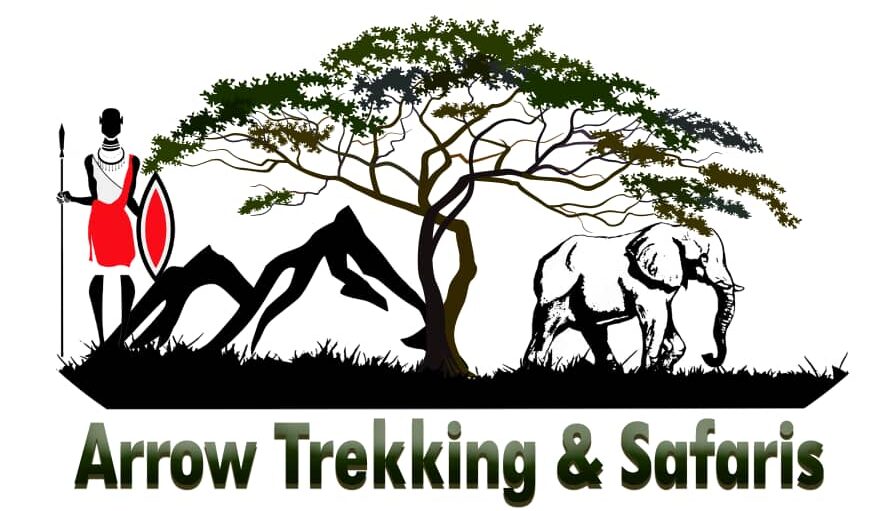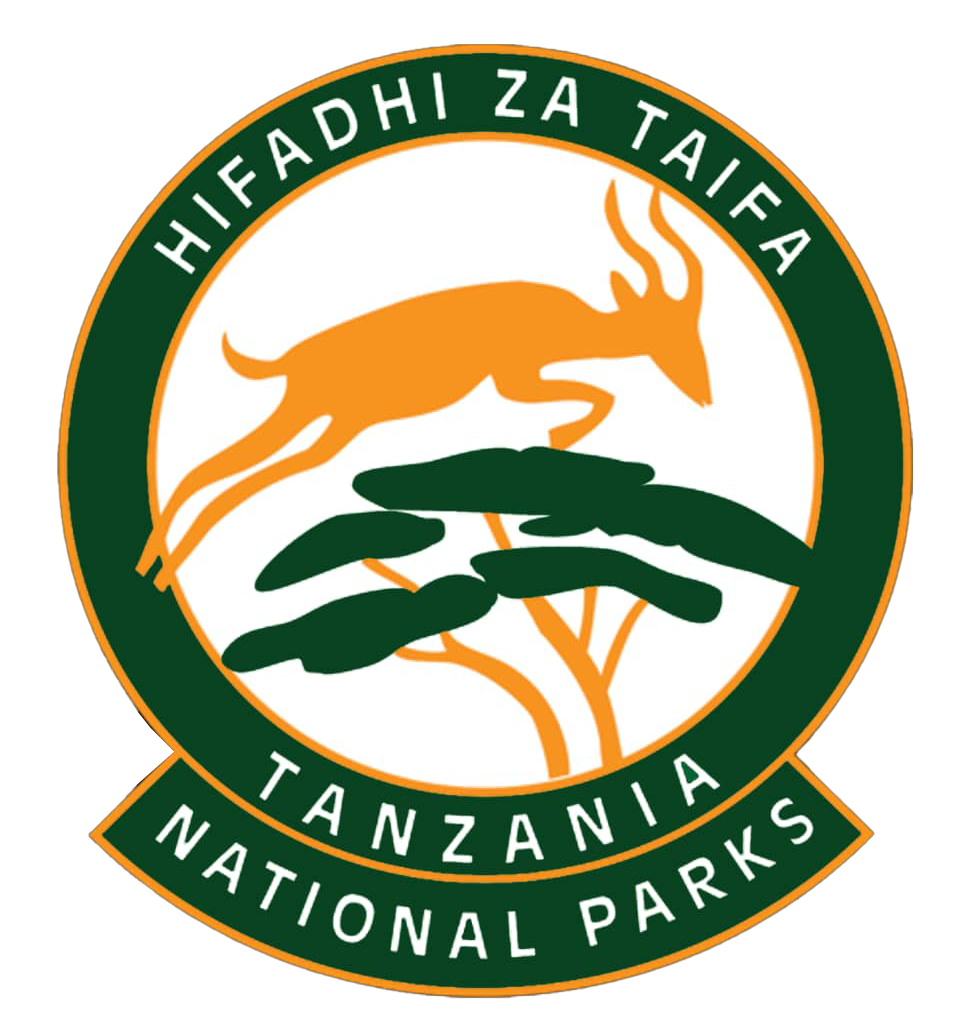Arrow Trekking and Safaris – Discover Africa’s top safari destinations with expertly crafted itineraries.
Tsavo National Park Overview
Tsavo National Park is Kenya’s largest national park, covering approximately 22,000 square kilometers. It is divided into Tsavo East and Tsavo West, each offering unique landscapes and wildlife experiences. Known for its red-dusted elephants, dramatic scenery, and diverse ecosystems, Tsavo is a perfect destination for adventure seekers and nature lovers. The park is home to the Big Five (lion, leopard, elephant, buffalo, and rhino) along with giraffes, zebras, hippos, crocodiles, and over 500 bird species.
Unlike other parks, Tsavo is less crowded, making for exclusive safari experiences. The Yatta Plateau in Tsavo East is the world’s longest lava flow, while Mzima Springs in Tsavo West provides a unique chance to observe hippos and crocodiles through an underwater viewing chamber. With its mix of savannahs, volcanic hills, rivers, and acacia woodlands, Tsavo offers a wild and untamed safari experience like no other in Kenya.
Geography & Ecosystems of Tsavo National Park
One of the most striking geographical features in Tsavo East is the Yatta Plateau, the world’s longest lava flow, stretching for about 300 kilometers. This area is mostly semi-arid, with open plains and scattered acacia trees, making it ideal for spotting large mammals. The Galana River, flowing through the park, acts as a crucial water source for wildlife, while the Lugard Falls, a series of eroded rocks, adds to the park’s beauty.
Tsavo West, in contrast, has a more dramatic and mountainous terrain, with volcanic hills, lava fields, and lush vegetation. The Chyulu Hills, a range of green volcanic mountains, contribute to the park’s highland ecosystem, while the Shetani Lava Flows, formed by an ancient volcanic eruption, create a stark, black rocky landscape. The presence of seasonal swamps, riverine forests, and underground springs supports a rich diversity of flora and fauna.
Best Time to Visit Tsavo National Park
June – October (Dry Season – Best Wildlife Viewing)
This is the best time for safaris, as wildlife gathers around water sources, making animals easier to spot. The vegetation is sparse, improving visibility, and the roads are dry and accessible. This period also has little to no rainfall, ensuring uninterrupted game drives. However, it is a popular time, so accommodations may be in higher demand.
November – December (Short Rains – Green Landscapes & Birdwatching)
Light rains begin, transforming the park into a lush, green paradise. While some animals disperse due to the availability of water, this is a great time for birdwatching, as migratory species arrive. The park is less crowded, offering a more exclusive experience, though occasional showers may affect game drives.
March – May (Long Rains – Low Tourism & Scenic Beauty)
This is the wettest season, with heavy rains that make some roads muddy and difficult to navigate. However, the park is at its most beautiful, with vibrant green landscapes and fewer visitors, making for a peaceful safari. While wildlife is still present, thick vegetation may make spotting animals more challenging. Budget travelers can benefit from lower accommodation rates during this period.
Best Activities in Tsavo National Park
Game Drives – Experience Tsavo’s Iconic Wildlife
Game drives in Tsavo National Park are a must-do activity, offering the chance to explore its vast, untamed wilderness. Tsavo is famous for its “red-dust” elephants, which get their unique color from the park’s red volcanic soil. Along with elephants, visitors can spot the Big Five (lions, leopards, elephants, buffaloes, and rhinos), as well as cheetahs, giraffes, zebras, and antelopes.
Tsavo East is known for its open savannahs, making it ideal for spotting large herds of wildlife, while Tsavo West features rugged terrain, rolling hills, and dense vegetation, offering a more adventurous safari experience. Early morning and late afternoon game drives provide the best chances to see predators in action and witness breathtaking African sunrises and sunsets.
Visit Mzima Springs – Watch Hippos & Crocodiles
Mzima Springs, located in Tsavo West, is a beautiful oasis fed by underground water from the nearby Chyulu Hills. This clear spring attracts a variety of animals, particularly hippos, crocodiles, and fish, which can be seen from both the surface and the underwater viewing chamber.
Visitors can take a guided walking tour along the springs, where they can observe hippos lazing in the water, crocodiles sunbathing on the banks, and a variety of bird species, including kingfishers, fish eagles, and herons. The lush, green surroundings provide a refreshing contrast to Tsavo’s typically dry landscapes, making it a perfect stop for relaxation and photography.
Explore the Lugard Falls & Galana River – Stunning Scenery & Wildlife Viewing
The Galana River, which flows through Tsavo East, is a vital water source for wildlife and offers incredible views. At Lugard Falls, the river cascades over eroded rock formations, creating small waterfalls and deep pools. The rock formations are uniquely sculpted by water over time, making them a fascinating natural wonder.
This area is an excellent spot to watch elephants, lions, leopards, and buffaloes coming to drink. The surrounding rocky cliffs also attract sunbathing crocodiles, making it a prime location for wildlife photography and sightseeing. Visitors can take guided nature walks along the riverbanks to appreciate the beauty and tranquility of this area.
Birdwatching – Discover Over 500 Bird Species
Tsavo National Park is a birdwatcher’s paradise, home to over 500 bird species. The park’s diverse landscapes—ranging from savannahs and wetlands to riverbanks and acacia woodlands—provide habitats for a wide variety of birds.
Some of the most notable species include ostriches, hornbills, kingfishers, eagles, bee-eaters, herons, flamingos, and secretary birds. The best time for birdwatching is during the wet season (November to April) when migratory birds from Europe and Asia arrive, adding to the park’s already impressive birdlife. Mzima Springs, the Galana River, and swampy areas in Tsavo West are particularly great locations for spotting different bird species.
Best Activities in Tsavo National Park
Game Drives – Experience Tsavo’s Iconic Wildlife
Game drives in Tsavo National Park are a must-do activity, offering the chance to explore its vast, untamed wilderness. Tsavo is famous for its “red-dust” elephants, which get their unique color from the park’s red volcanic soil. Along with elephants, visitors can spot the Big Five (lions, leopards, elephants, buffaloes, and rhinos), as well as cheetahs, giraffes, zebras, and antelopes.
Tsavo East is known for its open savannahs, making it ideal for spotting large herds of wildlife, while Tsavo West features rugged terrain, rolling hills, and dense vegetation, offering a more adventurous safari experience. Early morning and late afternoon game drives provide the best chances to see predators in action and witness breathtaking African sunrises and sunsets.
Visit Mzima Springs – Watch Hippos & Crocodiles
Mzima Springs, located in Tsavo West, is a beautiful oasis fed by underground water from the nearby Chyulu Hills. This clear spring attracts a variety of animals, particularly hippos, crocodiles, and fish, which can be seen from both the surface and the underwater viewing chamber.
Visitors can take a guided walking tour along the springs, where they can observe hippos lazing in the water, crocodiles sunbathing on the banks, and a variety of bird species, including kingfishers, fish eagles, and herons. The lush, green surroundings provide a refreshing contrast to Tsavo’s typically dry landscapes, making it a perfect stop for relaxation and photography.
Explore the Lugard Falls & Galana River – Stunning Scenery & Wildlife Viewing
The Galana River, which flows through Tsavo East, is a vital water source for wildlife and offers incredible views. At Lugard Falls, the river cascades over eroded rock formations, creating small waterfalls and deep pools. The rock formations are uniquely sculpted by water over time, making them a fascinating natural wonder.
This area is an excellent spot to watch elephants, lions, leopards, and buffaloes coming to drink. The surrounding rocky cliffs also attract sunbathing crocodiles, making it a prime location for wildlife photography and sightseeing. Visitors can take guided nature walks along the riverbanks to appreciate the beauty and tranquility of this area.
Birdwatching – Discover Over 500 Bird Species
Tsavo National Park is a birdwatcher’s paradise, home to over 500 bird species. The park’s diverse landscapes—ranging from savannahs and wetlands to riverbanks and acacia woodlands—provide habitats for a wide variety of birds.
Some of the most notable species include ostriches, hornbills, kingfishers, eagles, bee-eaters, herons, flamingos, and secretary birds. The best time for birdwatching is during the wet season (November to April) when migratory birds from Europe and Asia arrive, adding to the park’s already impressive birdlife. Mzima Springs, the Galana River, and swampy areas in Tsavo West are particularly great locations for spotting different bird species.








